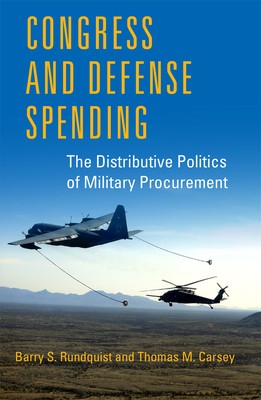
- We will send in 10–14 business days.
- Author: Barry S Rundquist
- Publisher: University of Oklahoma Press
- ISBN-10: 080613402X
- ISBN-13: 9780806134024
- Format: 14.3 x 21.9 x 1.3 cm, softcover
- Language: English
- SAVE -10% with code: EXTRA
Reviews
Description
Since World War II, the U.S. government has spent more than $10 trillion on defense. Although everyone in the United States must pay taxes supporting defense contracts, ten states have obtained 75 percent of all defense contracts and expenditures. In Congress and Defense Spending , Barry S. Rundquist and Thomas M. Carsey examine how the distribution of defense contracts is influenced by the interaction of state and local economies with the organization of Congress and how previous state representation on defense committees has affected current committee representation.
EXTRA 10 % discount with code: EXTRA
The promotion ends in 16d.21:00:37
The discount code is valid when purchasing from 10 €. Discounts do not stack.
- Author: Barry S Rundquist
- Publisher: University of Oklahoma Press
- ISBN-10: 080613402X
- ISBN-13: 9780806134024
- Format: 14.3 x 21.9 x 1.3 cm, softcover
- Language: English English
Since World War II, the U.S. government has spent more than $10 trillion on defense. Although everyone in the United States must pay taxes supporting defense contracts, ten states have obtained 75 percent of all defense contracts and expenditures. In Congress and Defense Spending , Barry S. Rundquist and Thomas M. Carsey examine how the distribution of defense contracts is influenced by the interaction of state and local economies with the organization of Congress and how previous state representation on defense committees has affected current committee representation.


Reviews